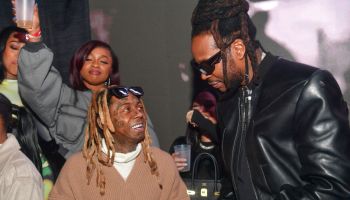Mayor Rahm Emanuel listed safer streets among his top three priorities when he became mayor a year ago, but Chicago, the nation’s third-largest city, is now testing that promise.
STORY: CHICAGOLAND: 35 Hurt And 7 Killed In Citywide Shootings
According to The New York Times, homicides are up by 38 percent from a year ago, even as killings have held steady or dropped in New York, Los Angeles and other major cities.
As of June 17th, 240 people had been killed there this year, mostly in shootings; 66 more deaths than occurred in the same period in 2011.
The violence has left its largest scars in some of Chicago’s most impoverished, struggling neighborhoods on the South and West Sides.
Shootings were reported in the last few days along the city’s Magnificent Mile shopping district and near the Lincoln Park Zoo — but a majority of the killings have been tied to Chicago’s increasingly complicated gang warfare and to the gritty neighborhoods where gangs have long thrived.
Interestingly enough, apart from homicides, rapes, robberies, burglaries and auto thefts have actually improved by about 10 percent since a year ago.
“We’ve got a gang issue, specific to parts of the city, and we have a responsibility to bring a quality of life to those residents, and we are going to do it,” Mayor Emanuel said in an interview on Friday. “My bigger issue is not only the homicides and shootings,” he added. “It’s what it does to all the legitimate citizens in that community and the kids.”
Gangs in this city have changed over the decades, splintering from a small set of well-established bands into hundreds of tinier groups with alliances so disparate and shifting, that even a former Gangster Disciple member from the West Side said he could not begin to keep them all straight.
In just the last two years, the police say, 500 monitored gang factions have fractured into more than 600, many of them with stunningly ready access to guns.
This gang violence needs to be addressed – and fast.















